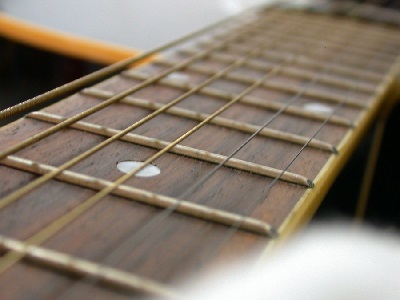Learn the Different Parts of the Guitar
The first lesson in our beginner lesson series is to introduce the anatomy of the guitar to you. In this tutorial, you will learn the common nomenclature used and understand the functionality of various parts of the guitar.
The rationale behind this is straightforward. In the later lessons where we look into the technical aspects of guitar techniques (e.g. palm muting and harmonics), you will be learning how to position your hands and utilize specific components of the guitar.
You wouldn’t want to be playing the wrong part of the guitar and end up being frustrated because you missed this introductory lesson. Without further ado, below is a labeled diagram that shows the various components of an electric and acoustic guitar.

Head
The head’s primary purpose is to hold the tuning mechanisms/gears and ends of the strings. Do you know that the guitar’s resonance is also transmitted through the head when the guitar is played?
Try this. Put one of your hands on the head and strum the guitar with the other hand. Can you feel the strong vibrations in the area around the head? The guitar head helps in sustaining the played notes (Hence, “headless” guitars tend to have less sustain than normal guitars).
You might also observe that the design of the head might vary across different types of guitars (usually slotted on classical guitars and fully solid in acoustic and electric guitars). Well, don’t worry about it. The primary purpose of the guitar head is for you to tune the guitar and has little effect on the guitar’s tone.
Tuning Peg
Tuning pegs are usually found on the guitar’s head and as the name suggests, they are used to tune the guitar by tightening or loosening string tension. When you are changing the strings, do note that you need to tie the end of the string to the peg in order to avoid slippage.
Nut
The nut is found at the location where the guitar head meets the neck of the guitar. It is a piece of material (e.g. plastic, bone) in which small grooves are carved out. These small grooves hold the strings in their proper position and help guide the strings towards the tuning mechanism.
The height of the nut affects the guitar’s action and worn-out nuts cause open strings to buzz. If you notice any of these issues, I recommend seeking professional help in making adjustments to the nut.
Fretboard
The fretboard is also known as the neck. On a guitar fretboard, it is divided up into many smaller sections by thin metal bars called frets. By pressing down a string against a particular fret and playing it, the string will give off a pitch at that fret.
Position markers
Position markers are indicators that can be found on certain frets. They can usually be found on the 3rd, 5th, 7th, 9th, 12th and 15th frets. These markers serve as a convenient way for guitarists to locate the frets when playing the guitar.
Note that the 12th fret has a marker that differs from the rest of the markers on the fretboard (normally dictated by 2 white dots in most guitars). This is because the 12th fret of a string produces the same note (octave) of a higher pitch as an open string.
Pickup/Soundhole
Most acoustic and classical guitars have hollow bodies. A soundhole is an opening in the hollow body designed to project sounds made by the vibrating strings. Basically, you can think of the sound hole as an amplifier that makes the plucked note sounds louder.
On the other hand, most electric guitars have a solid body with rectangular-shaped magnetic strips called pickups. These pickups are designed to pick up magnetic fluctuations caused by a vibrating string above it. After which, electrical signals are sent from the guitar to the amplifiers via cables. Pickups have the same purpose as that of a soundhole and in a nutshell, that’s how electric guitars work. The tone and loudness of the guitar can be controlled using the Tone/Volume Controls.
Body
The body of the guitar can come in many different shapes and sizes. Regardless of which, the guitar body holds the bridge, strings, strap holders, pickups (in electric guitars) and volume/tone controls. In general, the quality of the wood used as well as the design of the body can have a big influence on the tone of the guitar. This is one of the reasons why some guitars can cost up to 10X more than that of another one.
Bridge
The bridge is a piece of hardware where the strings are anchored to the body guitar. In hollow-bodied guitars, the bridge transmits vibrations from the strings to the guitar body for amplification. The height of the bridge also determines the action of the guitar. So if you ever need to change the action of your guitar, this is one of the key places to make adjustments.
Hands Down The Best Program Ever to Be Created
For the most effective step-by-step guitar method, we highly recommend Gibon’s Learn & Master Guitar course. This award winning DVD program is currently on a 3-day sale and you get to save $100 off the usual price today!
Click here to learn more details and purchase the course before this promotion ends…







Leave A Comment